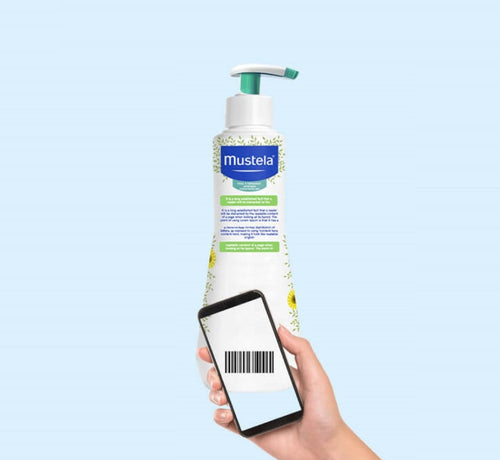Faced with widespread consumer distrust, independent mobile applications have been created, offering to scan cosmetic products to evaluate their composition.
On these apps, Mustela gets good ratings, and we suggest you check it out for yourself! Follow the leader.
The composition of products, or INCI list
Since 1999, all cosmetic products must visibly display their composition on the packaging using the INCI nomenclature, “International Nomenclature of Cosmetics Ingredients”: in Latin, ingredients of natural origin, in English, chemical ingredients.
The order of display of the ingredients is also codified: they are presented in descending order of their presence in the product, that is to say that the first presented in the list is the one present in the greatest quantity, And so on.
Simple ? Consumers are sometimes confused by the terms used. And this is why mobile apps, such as Yuka, QuelCosmetic, Clean Beauty, Inci Beauty, etc. appeared.
Apps to decipher ingredients
Today, nearly 20% of the population uses a mobile rating application, and parents of children under 5 are over-represented.
The apps allow consumers to scan cosmetic products to obtain an analysis of the ingredients they contain.
This analysis is carried out on the basis of the INCI list and according to criteria specific to each app, completely independent of the brands.
These applications have the merit of providing an additional reading grid for deciphering cosmetic ingredients, easily understandable by everyone. However, they present biases because they only evaluate the ingredients:
- They do not take into account the overall formula. However, an ingredient can pose a safety problem at high doses and present none at very low doses.
- They do not evaluate the quality of the extraction or manufacturing process of the ingredients. The purity of an ingredient can, however, be a guarantee of its safety.
- Finally, the effectiveness of products is not evaluated by applications.
Good marks for Mustela
These applications rank Mustela among the very good students!
Based on the products currently manufactured and referenced in the most downloaded applications in France as of 01/10/2019, we obtain the following evaluations:
- 96% of our products are well rated on Yuka (average rating: 92.7/100)
- 100% of our products are classified as risk-free on QuelCosmetic
- 91.7% of our products are classified as having no allergens or controversial ingredients on Clean Beauty
- 89.6% of our products are rated GREEN (score greater than 10) on INCI Beauty (average score 15.1/20)
Please note that the applications do not all de-reference our old products from their database which are no longer manufactured, which can be misleading.
But then why do our products get different ratings depending on the app? It's quite simply that each application applies its own analysis criteria, and thus arrives at different conclusions.
Different criteria
Applications do not have the same sources of information for their databases. As a result, sometimes they do not take the same position on certain ingredients.
For example, PEG, or PolyEthylene Glycol can be classified green by QuelCosmetic and red by others. Same divergence on the question of allergens, which divides the applications. Another complication is that some, like INCI Beauty, include criteria linked to environmental protection in their rating, while most focus solely on health. Difficult for users to find their way…
Why some Stelatopia products are poorly rated
Certain Stelatopia treatments, intended for atopic-prone skin, are poorly rated by different applications because they contain petrolatum, the regulatory technical name for petroleum jelly. This mineral oil has been banned in cosmetic products by a European directive since 2004. With one exception: when the complete refining history is known and it is possible to verify that the substance from which it is produced is not not carcinogenic.
This is the case with our products: we rigorously select our petrolatum based on its pharmaceutical quality and purity and its refining process guarantees that it is safe. And if we have chosen to keep it in our Stelatopia emollients, it is because we have not yet found an ingredient that is as safe and effective for taking care of this skin which requires special attention. But efficiency is not yet a criterion taken into account by the apps.




